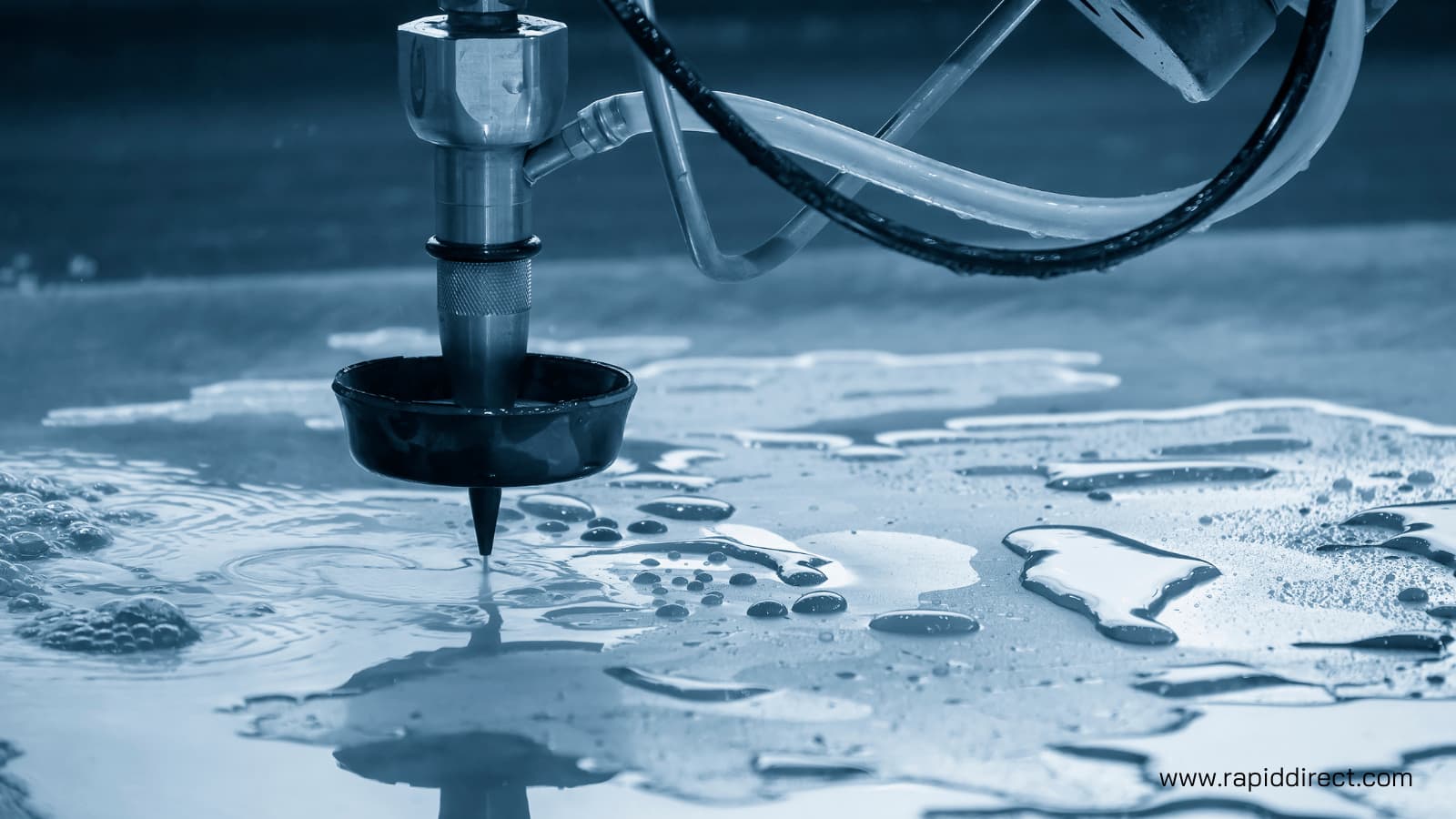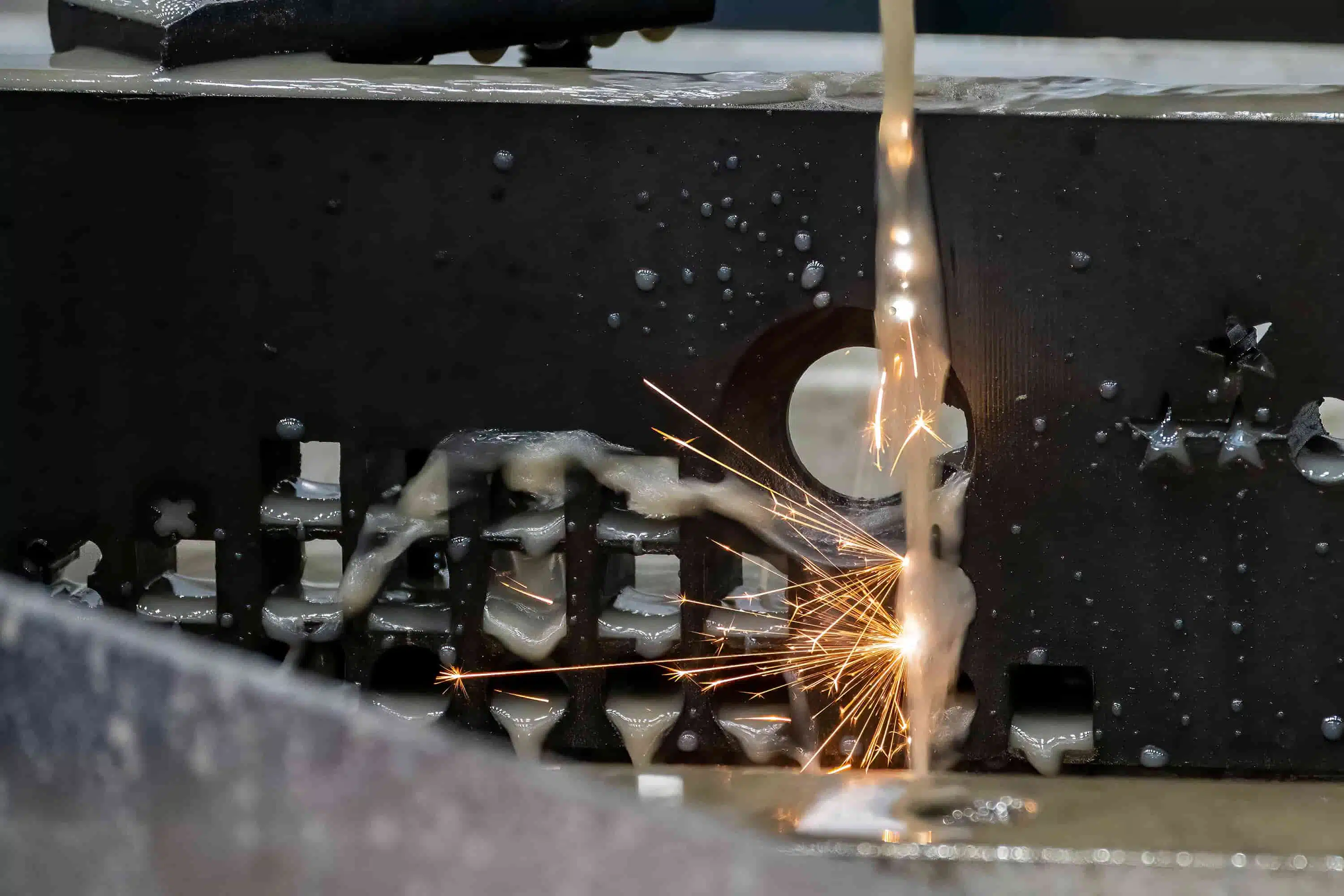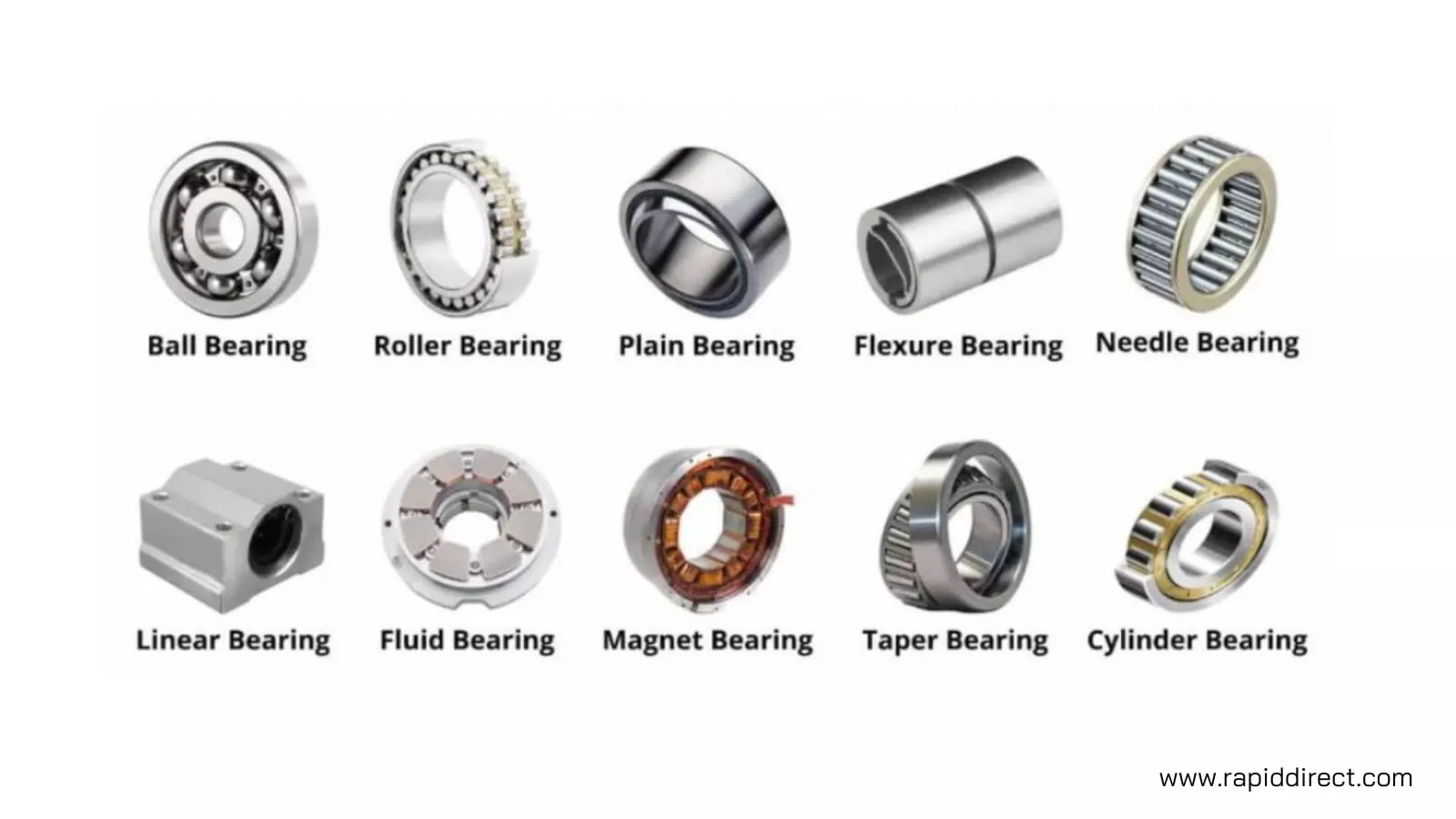Plastic injection molding is a widely utilized production method for creating multi plastic parts that offer solutions for both small and large-scale manufacturing.
To enhance efficiency and productivity in injection molding setups, two popular and common approaches are multi-cavity molds and family molds. However, the multi-cavity vs family mold debate often leaves people confused as to which one is better for them.
This article will explore the nature of those molds and how they contribute to increasing the efficiency of a production environment.
Brief Introduction to Multi-Cavity and Family Molds
Before starting on the details of the multi-cavity injection molds vs family injection molds debate, let’s take a brief look at what they are.
Multi-Cavity Molds
Multi-cavity molds are an excellent approach to increasing production efficiency and output.
Unlike single-cavity molds that produce one part per cycle, multi-cavity molds have multiple identical cavities, enabling the simultaneous production of multiple parts in a single injection molding cycle. This significantly increases production output and efficiency, allowing for higher volumes of parts to be produced in a shorter period.
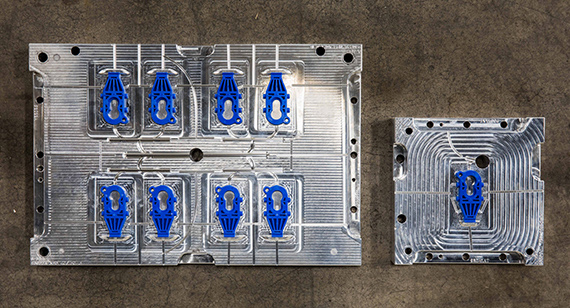
Therefore, multi-cavity molds have several advantages over other processes. Here are a few main ones:
- Reduced Cycle Time
- Lower Cost Per Part
- Consistent Part Quality
- Space and Equipment Optimization
- Simplified Inventory Management
- Enhanced Process Control
- Flexibility in Part Design
While there are multiple advantages of relying on multi-cavity mold, the limitations of the process are equally important.
- Increased mold complexity and cost when compared to single cavity molds.
- Maintenance and repair challenges.
- Parting line and flash issues.
- Manufacturing feasibility for certain parts.
Family Molds
Family molds produce multiple parts in a single cycle. However, the main difference between multi-cavity molds and family molds is in the kind of cavities they have. Unlike multi-cavity molds, family molds don’t produce identical parts. They instead allow for the production of multiple related parts within a single mold and accommodate different design variations or components for a particular assembly.
The use of family molds offers several advantages, including reduced tooling costs, improved production efficiency, and simplified part changeovers. Family molds also streamline the manufacturing process and provide flexibility for variations in part designs.
- Better cost
- Improved efficiency
- Simplified part changeover
- Enhanced part compatibility
- Reduced waste
Just like the advantages, relying on family molds has some drawbacks as well.
- High complexity
- Increased tooling requirements
- Limited flexibility
- Risk of contamination
- Lower production volume
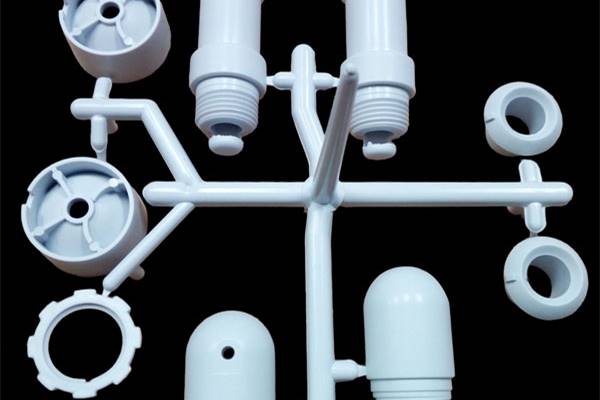
Multi-cavity vs Family Molds: The Major Differences
Both molds have multiple cavities and aim to improve efficiency but the concepts diverge based on their applications, configuration, and other process requirements Here are the major differences:
1 – Production volume and efficiency
From their description, it’s natural that multi-cavity molds focus more on creating more copies in a shorter time frame. This is excellent for applications where the manufacturers are dealing with a single plastic part.
However, not all plastic components consist of a single part. Many of them are complex assemblies that become usable once different kinds of parts are connected.
That’s where family molds come into the picture. They can create the majority, or all the parts needed, for the assembly in one cycle. This makes them perfect for efficient assembly lines where the only thing left after the post-processing would be to join the parts and make the product ready for its application.
To sum up, multi-cavity molds are a great way to achieve shorter lead times by creating multiple parts simultaneously. However, they don’t cater to the different parts required for a complex assembly.
Family molds might not produce the same number of identical parts in one cycle, but they create multiple parts in one go. Naturally, it is faster than waiting to produce the related part in another batch.
2 – Cost considerations
The initial tooling costs for multi-cavity and family molds are more or less the same. However, the overall costs go down as the production volume increases. Multi-cavity molds are a cost-effective option and can significantly reduce the cost per part because they can produce multiple copies in a single cycle. Mold life is generally based on the number of cycles rather than the parts produced, so they can perform well with more economical tooling material as well.
Family molds offer a different kind of cost-saving opportunity. Rather than investing in separate molds for different parts, it’s possible to get the job done with one. However, the initial tooling cost for family molds is higher due to the complexities involved, which means that they’ll be a bit more expensive than multi-cavity injection molds.
3 – Design complexity and flexibility
Multi-cavity injection molds have more simplistic tooling requirements than family molds. The cavities are all identical to each other and can quickly produce identical parts by streamlining both the production cycles and the tooling process.
Family molds, on the other hand, are more complex as they accommodate multiple designs and have additional tooling requirements/considerations to ensure efficient production.
The characteristics reverse when it comes to flexibility. Since multi-cavity molds have identical cavities, switching the design or part can be difficult and time-consuming. Family molds, however, can significantly reduce downtime as changing between parts is both easier and quicker because of the difference in their cavities.
4 – Tooling and maintenance requirements
Comparing muti-cavity injection molds vs family injection molds based on their tooling and maintenance requirements will give a clear winner. Multi-cavity molds have simpler tooling and maintenance requirements.
Their maintenance typically consists of cleaning, inspection, and occasional repair when needed.
On the other hand, family injection molds have more complex tooling requirements because of their intricate designs. They have additional maintenance requirements as well because they need frequent tooling adjustments as well to accommodate for any variations in the design.
5 – Part quality and consistency
Multi-cavity molds can produce excellent quality parts with the utmost consistency because of the identical mold cavity. They offer better filling and cooling characteristics that can minimize variations and defects in the parts produced.
Family injection molds, on the other hand, are quite challenging when it comes to maintaining consistency and quality.
The variations in part designs may have differences when it comes to cooling requirements and filling characteristics. However, it’s quite possible to mitigate these issues and even eliminate them by effective process control and optimization.
Here’s a brief table that sums up the key differences between multi-cavity and family molds.
| Multi-cavity Molds | Family Molds | |
| Production Volume and Efficiency | Excellent for reducing lead times by simultaneously creating identical parts for high-volume production | Can significantly reduce the assembly time by creating all associated parts together |
| Cost | High tooling cost, but can reduce the cost per part when the production volume increases | High tooling costs but circumvents the requirement of creating separate molds for all parts |
| Design Flexibility | Low complexity, but lower flexibility as well | Higher complexity, but with higher flexibility too |
| Tooling Requirements | Simpler tooling and maintenance requirements | More complex tooling and frequent alignment are needed in addition to the regular maintenance process |
| Part Quality | Better quality parts due to minimal design variations | Challenging to maintain the same quality due to varying cooling requirements |
Effectively Designing Multi-Cavity and Family Molds
Injection molds have a lot riding on them when it comes to the overall quality of production. There are a lot of general and specific considerations during the design phase that manufacturers need to be careful about. Both multi-cavity and family molds have some unique characteristics that should always be considered for the overall efficiency of the process.
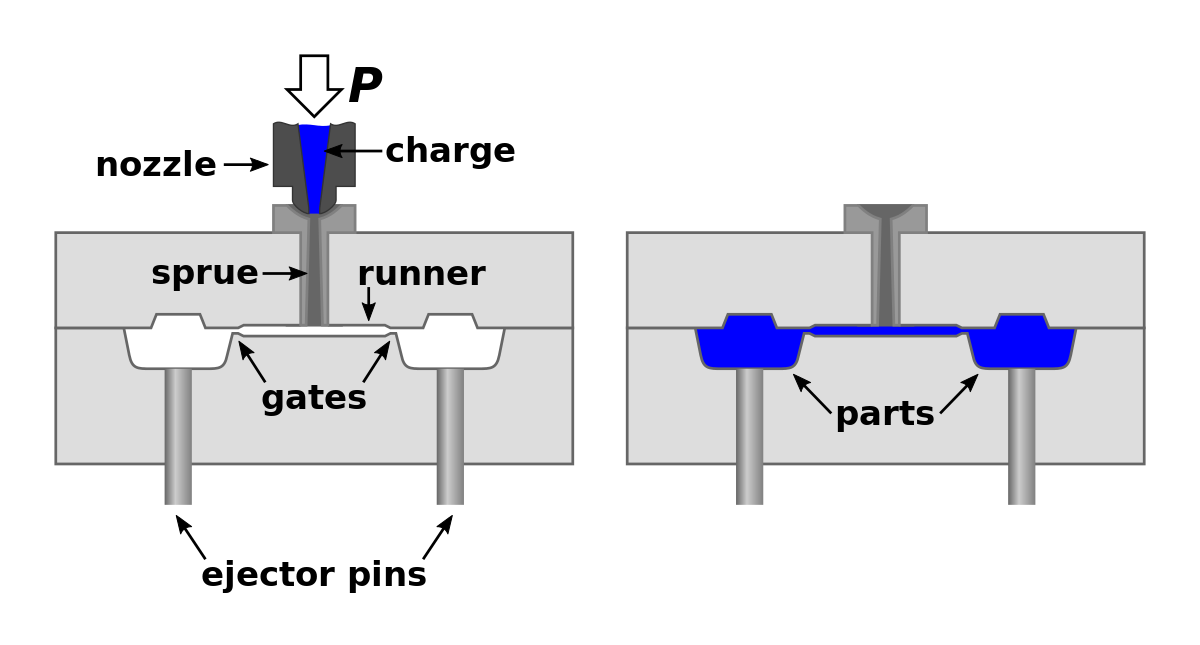
Major Design Considerations for Multi-Cavity Molds
Apart from general considerations for mold development, the following are some of the most important considerations for manufacturers working with multi-cavity molds.
- Cavity Balancing: It’s integral to achieve proper cavity balancing to ensure consistent filling, cooling, and ejection during the process. This involves adjusting gate sizes, runner systems, and cooling channels to minimize sudden twists and turns in the design to ensure uniformity in the design.
- Runner System Design: It’s necessary to design an efficient runner system that allows the proper material flow to each cavity in the multi-cavity mold. Consider factors such as gate design, runner dimensions, and runner layout to ensure balanced and controlled material distribution.
- Cooling System: Another important factor is the implementation of an effective cooling system to ensure uniform cooling across all cavities. Proper cooling helps prevent part warpage, reduces cycle time, and improves productivity. Consider the placement of cooling channels and the use of cooling inserts or baffles to optimize cooling efficiency.
- Mold Material and Construction: Finally, construction and material selection play an integral part in ensuring that the mold performs according to expectations. Select appropriate mold materials and construction techniques to ensure durability and longevity. Consider factors such as the choice of mold steel, surface coatings, and mold maintenance requirements to ensure the mold can withstand the demands of high-volume production.
Major Design Considerations for Family Molds
Family molds are even more complex because of their intricate design requirements. Here are a few important considerations for the design of effective family injection molds.
- Part Compatibility and Interactions: Consider the compatibility and interactions between different parts within the family mold. Ensure proper alignment, gating, and ejection for each component. Account for potential part variations and design the mold to accommodate different part sizes, shapes, and features.
- Tooling Flexibility: Design the family mold with flexibility in mind to accommodate changes or iterations in individual part designs. Consider the use of interchangeable inserts or modular mold components to facilitate part variations and allow for easier mold maintenance and repair.
- Mold Separation and Ejection: Pay close attention to mold separation and ejection mechanisms to ensure efficient and reliable ejection of all parts. Design appropriate parting lines, slides, and lifters to facilitate easy part release without risking damage to the components.
- Parting Line Considerations: Given the presence of multiple parts with different geometries, carefully design the parting line to minimize parting line mismatch and potential cosmetic defects. Consider the part design and material flow to optimize parting line placement and minimize the impact on part quality.
Or, You Can Avoid All That With Single Cavity Molds!
In some design cases, it’s not necessary that the more popular choice is always the better one. Single cavity molds can be an excellent choice if you are dealing with an exceptionally complex or large design with a lot of customization.
It’s also smarter to rely on single cavity molds for unique designs that require more individual attention or haven’t been validated yet. Furthermore, single-cavity molds are also a great choice for lower production volumes as multi-cavity or family molds cost a lot, which may not be justified if the expected production quantities are not substantial.
Single cavity vs Multi cavity vs Family Mold: Making the Right Choice
The type and quality of the mold determine the overall efficiency, performance, and results of the entire process so it’s natural that it gets so much attention.
For efficient high-volume production, both multi-cavity and family molds are excellent choices depending on the type of project. Naturally, the processes come with their unique advantages and drawbacks as well, so it’s really important to consider all the factors while deciding which type of mold is the right choice.
This decision can be hard as it comes with so many dependencies. RapidDirect is proud to be one of the pioneers of the process in the market with its history of consistently delivering excellence to its customers and making the manufacturing process more intuitive through its proprietary web-based platform.
For injection molding, the team at RapidDirect has all the right knowledge and global exposure to not only create the right products according to the demand but also recommend the most suitable mold and help with other decisions to streamline and optimize the project for the best results.
